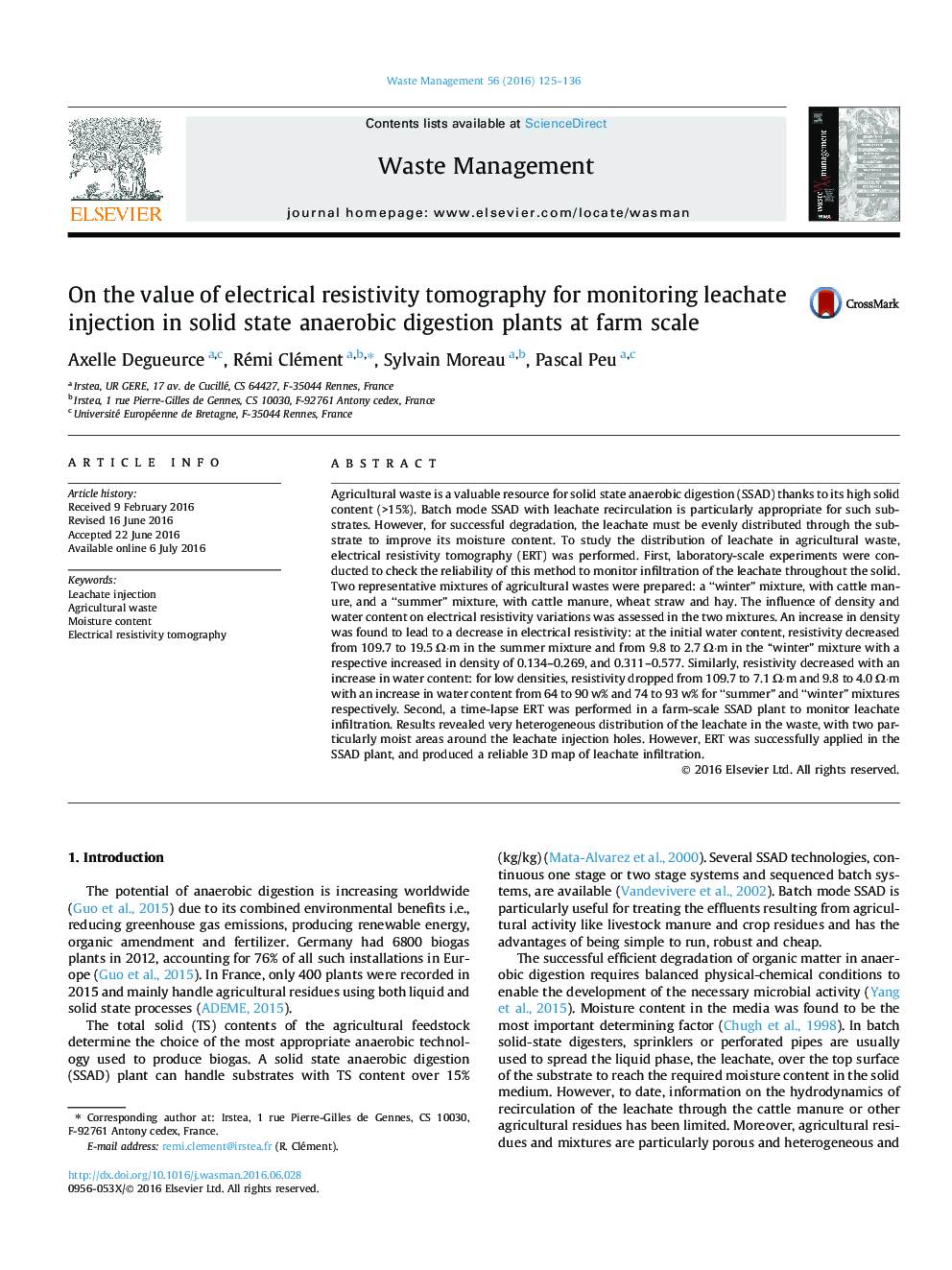| Article ID | Journal | Published Year | Pages | File Type |
|---|---|---|---|---|
| 4471120 | Waste Management | 2016 | 12 Pages |
•Electrical resistivity decreased with an increase in density of agricultural wastes.•Electrical resistivity decreased with an increase in moisture content.•The ERT method monitored leachate infiltration efficiently at farm scale.•The injection system did not distribute the leachate evenly through the solid waste.
Agricultural waste is a valuable resource for solid state anaerobic digestion (SSAD) thanks to its high solid content (>15%). Batch mode SSAD with leachate recirculation is particularly appropriate for such substrates. However, for successful degradation, the leachate must be evenly distributed through the substrate to improve its moisture content. To study the distribution of leachate in agricultural waste, electrical resistivity tomography (ERT) was performed. First, laboratory-scale experiments were conducted to check the reliability of this method to monitor infiltration of the leachate throughout the solid. Two representative mixtures of agricultural wastes were prepared: a “winter” mixture, with cattle manure, and a “summer” mixture, with cattle manure, wheat straw and hay. The influence of density and water content on electrical resistivity variations was assessed in the two mixtures. An increase in density was found to lead to a decrease in electrical resistivity: at the initial water content, resistivity decreased from 109.7 to 19.5 Ω·m in the summer mixture and from 9.8 to 2.7 Ω·m in the “winter” mixture with a respective increased in density of 0.134–0.269, and 0.311–0.577. Similarly, resistivity decreased with an increase in water content: for low densities, resistivity dropped from 109.7 to 7.1 Ω·m and 9.8 to 4.0 Ω·m with an increase in water content from 64 to 90 w% and 74 to 93 w% for “summer” and “winter” mixtures respectively. Second, a time-lapse ERT was performed in a farm-scale SSAD plant to monitor leachate infiltration. Results revealed very heterogeneous distribution of the leachate in the waste, with two particularly moist areas around the leachate injection holes. However, ERT was successfully applied in the SSAD plant, and produced a reliable 3D map of leachate infiltration.
